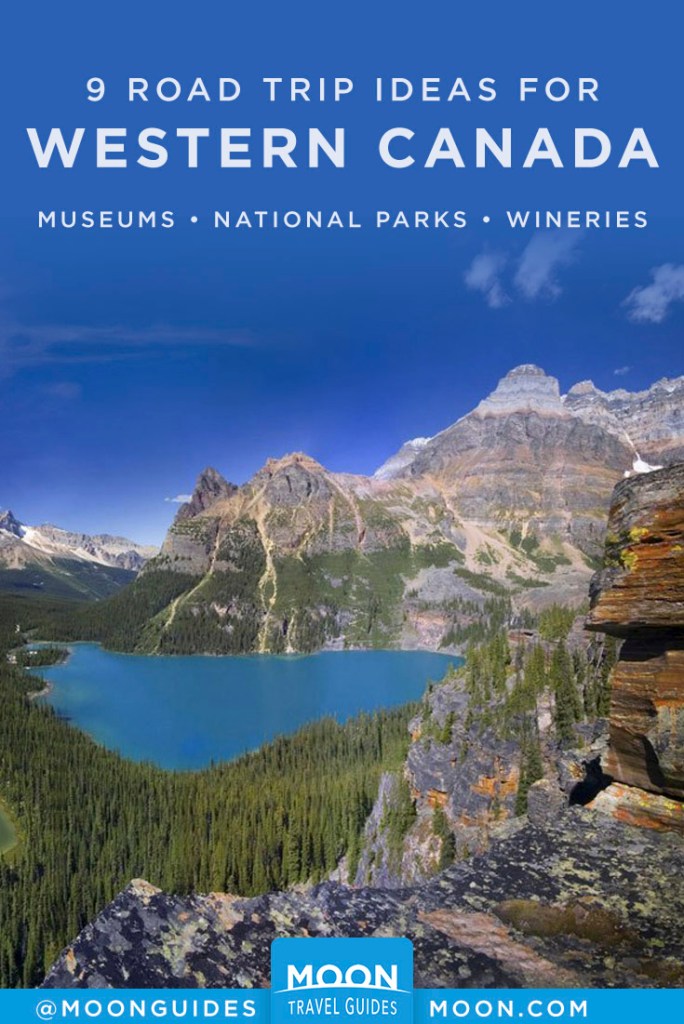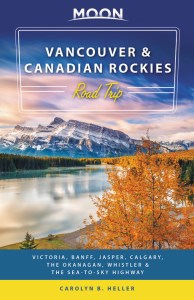Where to Go on a Western Canada Road Trip
Road tripping Vancouver and the Canadian Rockies and can’t decide between vibrant nightlife and breathtaking views? Moon has you covered. Here’s the best of each region, from dynamic cities to world-class national parks. Take in historical sites, astounding mountains, and Western Canada’s best food. Whatever your mood, start here to find adventure on the road.
Vancouver
The rainforest meets the city in Vancouver, where massive Stanley Park and forests of glass-and-steel skyscrapers populate the downtown peninsula. The North Shore Mountains overlook the city skyline, while the sea hugs the city, with sandy beaches just steps from urban hotels. Yet this outdoor-oriented metropolis has plenty of culture as well, reflecting its First Nations heritage (the totem poles at the Museum of Anthropology are a must-see) and its contemporary Pacific Rim society. Granville Island, Gastown, and Kitsilano draw food-lovers to their locally focused restaurants, while the suburb of Richmond has some of the best Chinese food outside China. With its well-connected international airport and location just north of the U.S. border, 145 miles (230 kilometers) from Seattle, Vancouver is a convenient starting point for trips along the British Columbia coast and east to the Canadian Rockies.
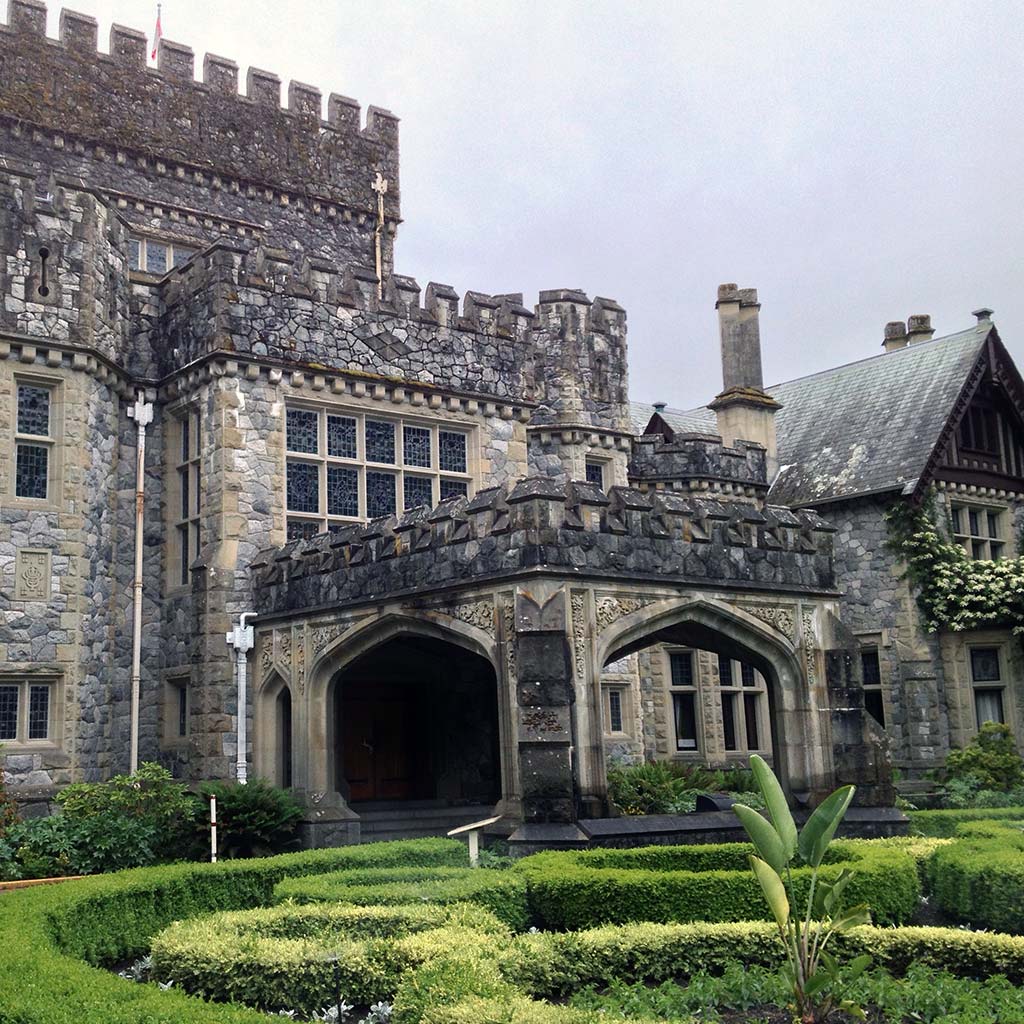
Victoria and Vancouver Island
Across the Strait of Georgia at the southern tip of Vancouver Island, British Columbia’s waterfront capital city of Victoria retains elements of its British heritage—visiting the world-class Butchart Gardens and taking afternoon tea at the grand Fairmont Empress are still beloved traditions for visitors—even as this increasingly cosmopolitan community booms with new restaurants and cocktail bars. Elsewhere on the island, you can snorkel with seals, take a bear-watching tour, or watch the waves crash along the Pacific coast.
Whistler and the Sea-to-Sky Highway
One of western Canada’s most spectacular short drives, the Sea-to-Sky Highway connects Vancouver to the resort town of Whistler. Known for winter sports, Whistler has plenty to do in warmer weather, too, from riding the gondolas into the mountains, to hiking, cycling, and canoeing, to exploring the region’s aboriginal heritage.
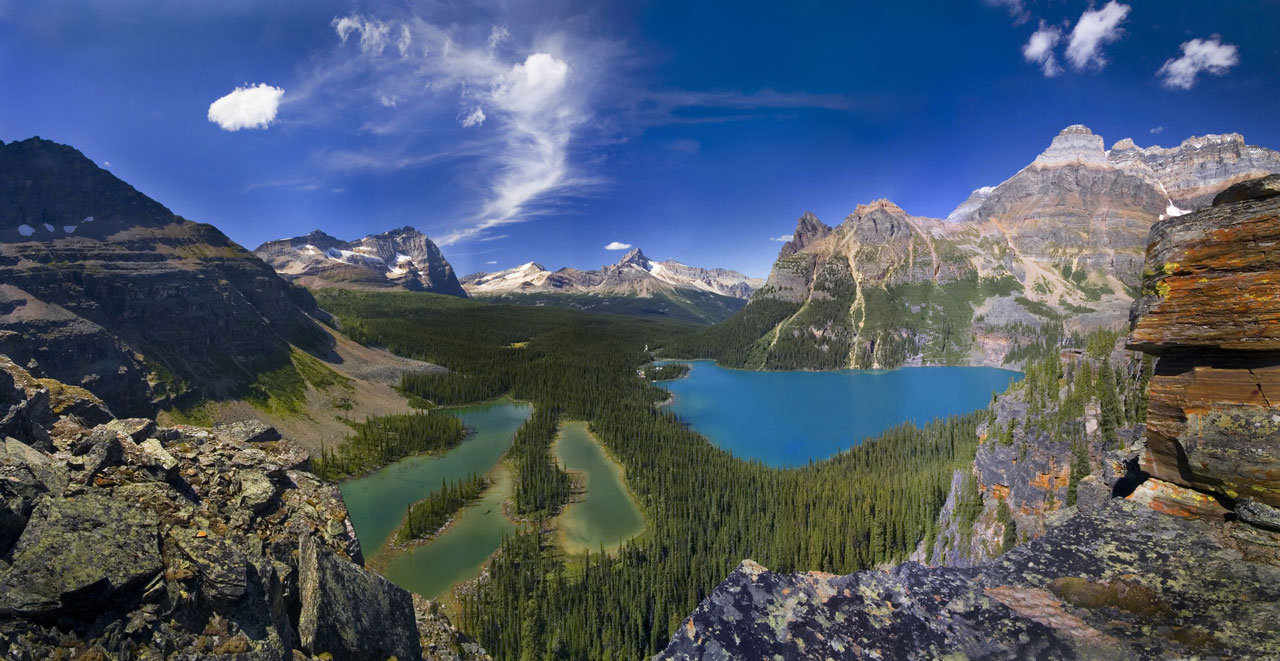
Kamloops to the B.C. Rockies
As you drive east from Vancouver and cross the Coast Mountains, you leave behind the green coastal rainforest and wind through the desert-like hills of British Columbia’s interior. Here, the sunny city of Kamloops makes a convenient stopover point midway between Vancouver and the Rockies, with several small museums and an emerging wine industry. Continue east on the Trans-Canada Highway to a trio of national parks, Mount Revelstoke, Glacier, and Yoho, where you can hike, paddle the glacier-fed lakes, or enjoy the mountain scenery. Base yourself in towns like Revelstoke or Golden (only Yoho National Park has accommodations) and enjoy their cafés, restaurants, and comfortable lodgings.
Banff and Lake Louise
Banff National Park is a highlight of any Canadian Rockies road trip, with dramatic mountain peaks and natural hot springs, the sparkling blue Lake Louise, and more than 1,000 miles (1,600 kilometers) of hiking paths. Within the boundaries of Canada’s first national park, the town of Banff bustles with restaurants, museums, and shops, and though its sidewalks can feel as jammed as New York City’s during the busy summer season, there’s always plenty of space out on the trails.
Jasper
The Icefields Parkway between Lake Louise and Jasper is one of Canada’s great drives, where you can stop at the Columbia Icefield to walk on a glacier or hike among the glacier-capped peaks. Without Banff’s crowds, Jasper National Park is equally beautiful, and as the largest park in the Canadian Rockies, there’s ample room to explore its lakes, canyons, and mountains.
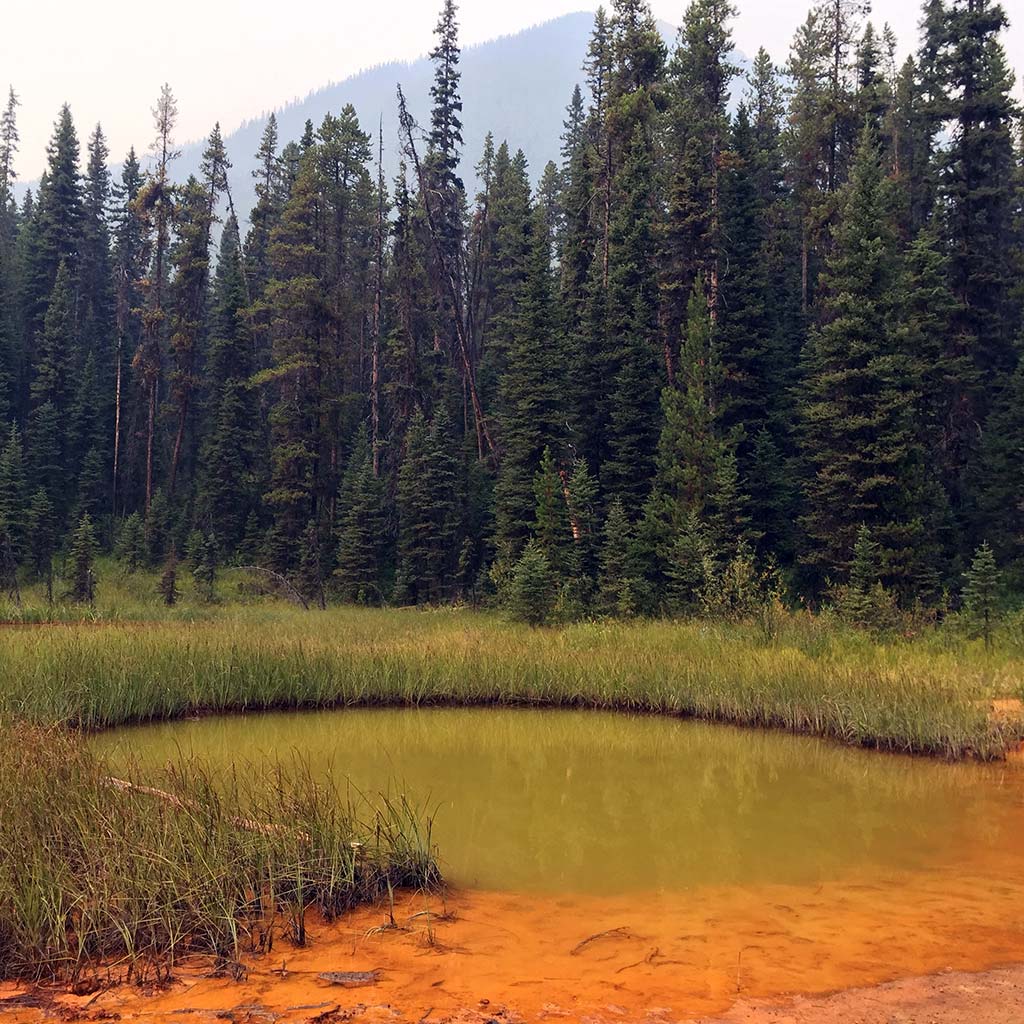
The Kootenays
The Kootenays region extends across southeastern British Columbia, between the Rocky Mountains and the Okanagan Valley. Here, you can explore the diverse landscape of Kootenay National Park, follow the Hot Springs Highway to several natural mineral pools, hang out in funky mountain towns like Fernie and Nelson, or learn more about the First Nations who’ve lived in the area for more than 10,000 years. Delve into the history of other ethnic communities, too, including the Japanese Canadians who were sent to internment camps across B.C. during World War II, and the Russian pacifists known as the Doukhobors who settled here in the early 20th century.
The Okanagan
More than 200 wineries hug the lakeshores and rocky hills of the sunny Okanagan Valley in central B.C., often called the “Napa of the North.” This agricultural region stretches from Osoyoos, in the desert-like lands near the U.S. border, north to Kelowna, the area’s largest city. If you love wine, or enjoy being outdoors along some of Canada’s warmest lakes, plan to stop in the Okanagan as you drive between Vancouver and the Rocky Mountains.
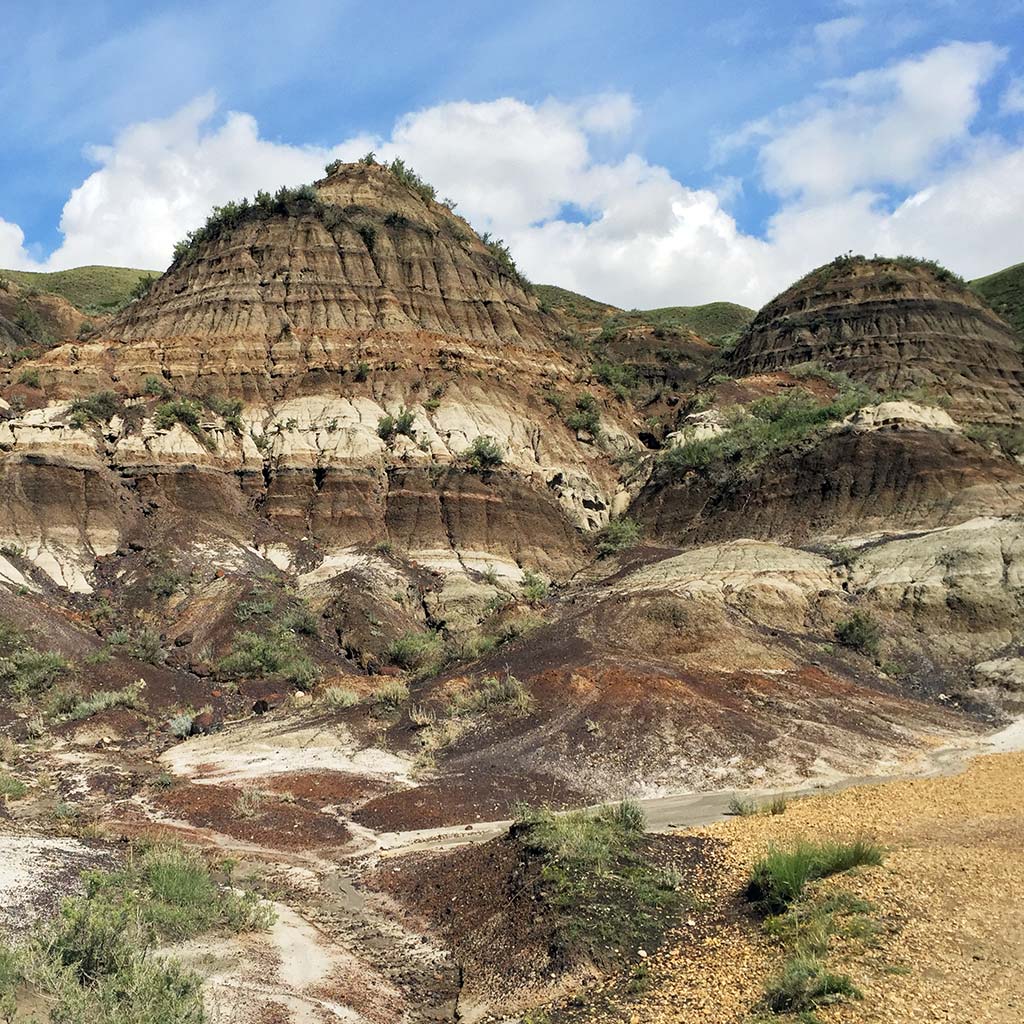
Calgary
Canada’s fourth-largest city has the closest airport to the Canadian Rockies, so you can start or end your Rocky Mountain travels here. Known for the annual Calgary Stampede, Calgary has the excellent Glenbow Museum of western Canadian history, art, and culture; Heritage Park Historical Village, the country’s largest living history village; and a new National Music Centre. The city’s restaurants regularly rank among the country’s top dining spots. A short drive from Calgary, the Canadian Badlands has a completely different geological profile, with its unusual hoodoo rock formations and deep rocky canyons.
Related Travel Guide
Pin it for Later
